Did you know that snails are becoming the go-to cleaning crew for aquariums?
And out of all the snails available, nerite snails are rising in popularity due to their impressive efficiency in consuming algae and other unsightly debris.
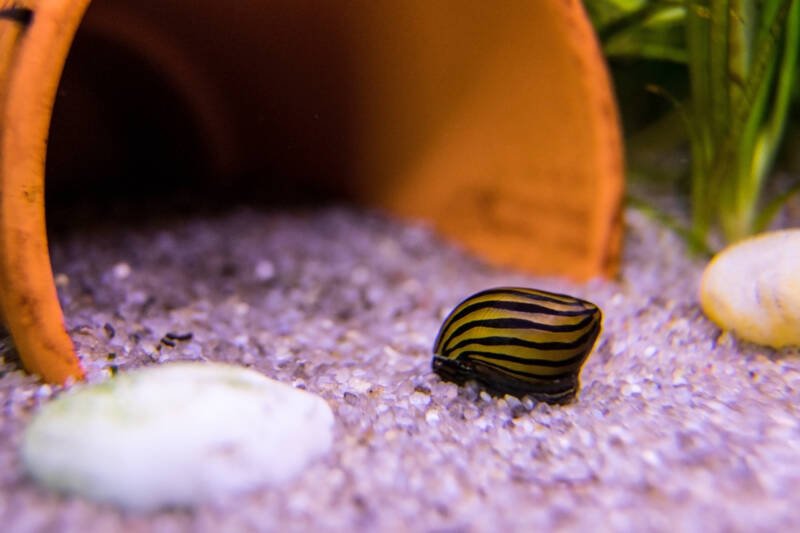
These little invertebrates are a must-have for any aquarium enthusiast, regardless of experience level.
The best part? Nerite snails are easy to find and reasonably priced at most pet and aquarium stores. Plus, they thrive in various tank environments, making them an ideal choice for any setup.
So if you’re looking for a reliable and efficient algae eater for your aquarium, look no further than the impressive nerite snail.
At a glance
| Size: | 0.5-1.0 inches (1.3-2.5 cm) |
| Lifespan: | around a year |
| Minimum tank size: | 20 gallons (76 l) |
| Temperature: | 72-78°F (22-25.5°C) |
| pH: | 6.5-8.0 |
| Hardness: | 6-12 dKH |
| Water parameters: | 0 ppm ammonia, 0 ppm nitrite, 0 ppm nitrate |
In this article
Physical Description, Size, & Lifespan
Nerite snails (Neritina natalensis) are quickly becoming one of the favorite snails in the aquarium community.
This is aided by the fact that there are so many different color variations, and this snail overall is hardier.
Different nerite snails will grow to different sizes, but on average, they’re about 0.5 – 1 inch.
Unfortunately, nerite snails only live an average of one year.
Some can live longer with proper care and attention, and several aquarists have reported their nerite snails lived up to two and even three years.
But even so, they are still likely the shortest-living tank inhabitant.
Other nerite snails only live a few days after adding them to the tank due to the stress of the move from the pet store to your tank.
Types of Nerite Snails
There are several types of nerite snailscommon in the hobby and available for purchase. Though their patterns differ, all nerite snails remain efficient cleaners.
Some of the more popular colorations are described below.
1. Zebra Nerite Snails
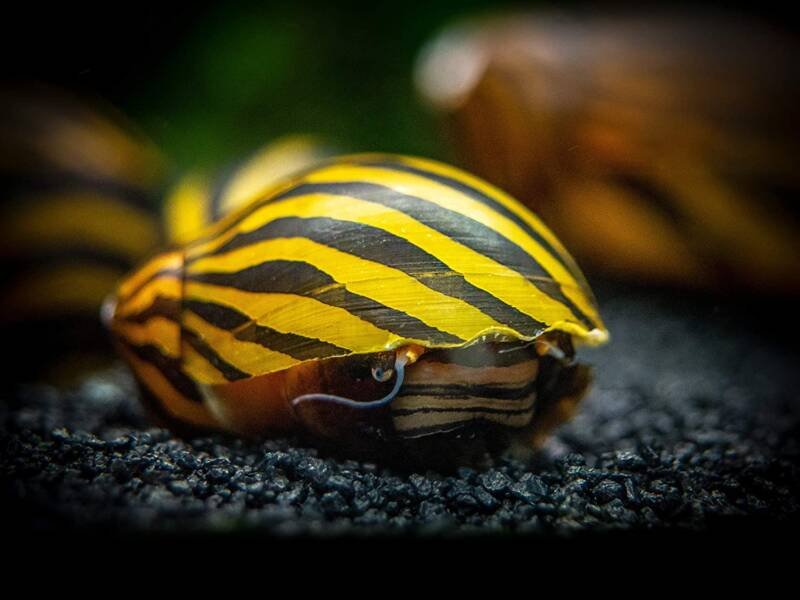
Generally, they’re a golden-brown color with vertical black stripes that run down their shell. This creates a pattern similar to a zebra.
Their shells are smooth to the touch.
2. Tiger Nerite Snails
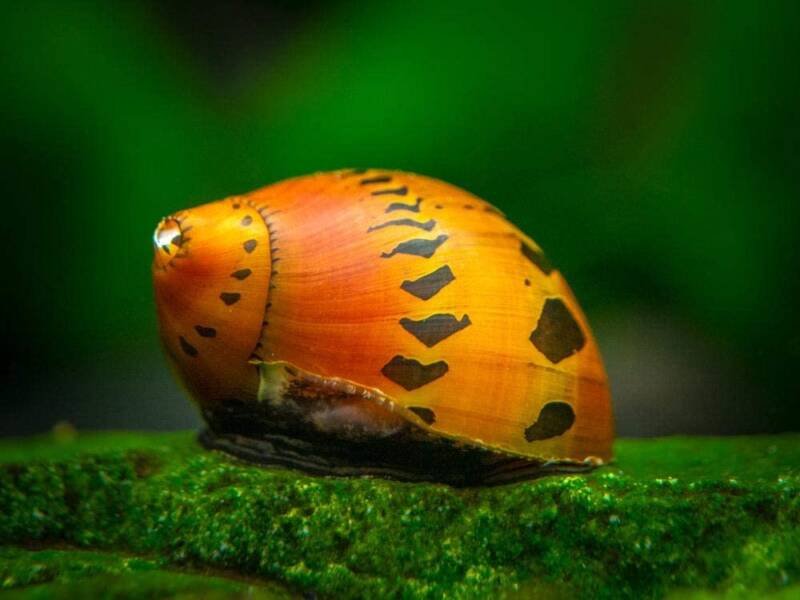
Tige nerite snails are a light brown with black patterned accents.
The patterns often resemble tiger stripes, though they can also look like leopard spots.
Their shells are smooth.
3. Olive Nerite Snails
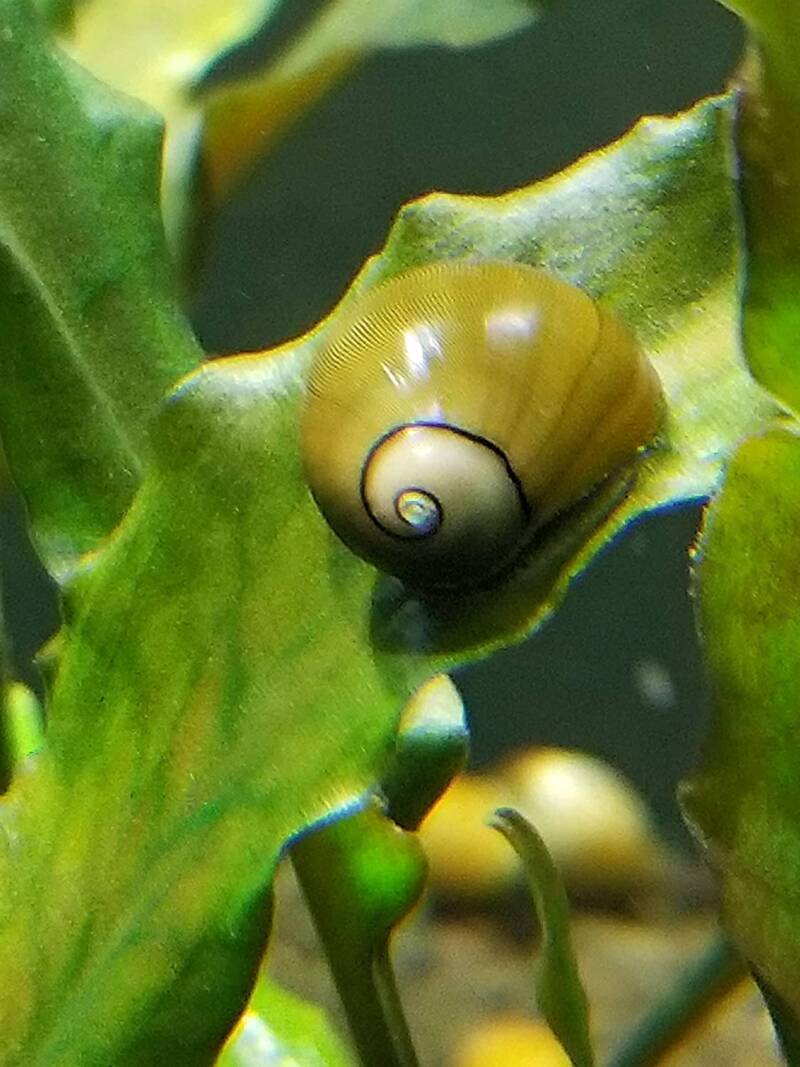 Olive nerite snails are a dark green color that almost verges on brown.
Olive nerite snails are a dark green color that almost verges on brown.
As their name hints at, they look similar to an olive. Their shells are smooth but may be slightly ridged.
4. Racer Nerite Snails
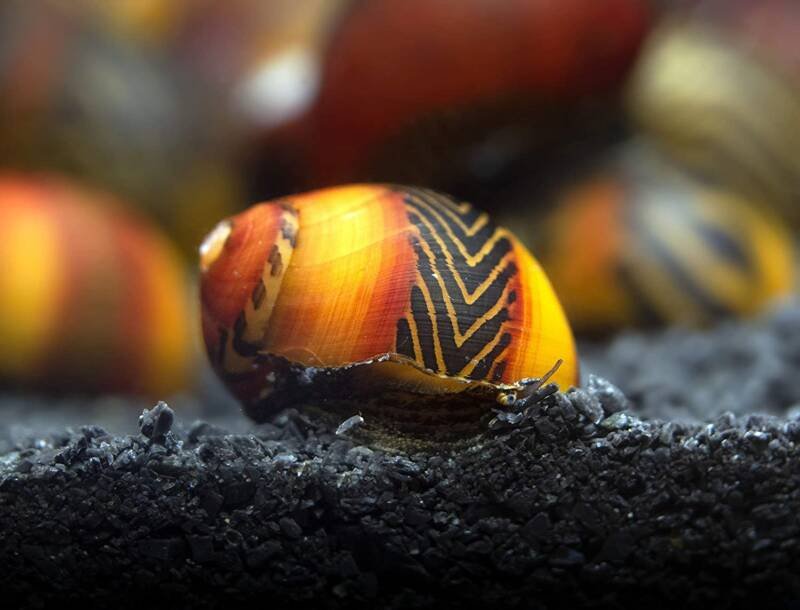
Racer nerite snails are a dark brown or black color, though they often have dark gold or grey highlights.
They also have slight grooves on their shells that run vertically down.
5. Horned Nerite Snails
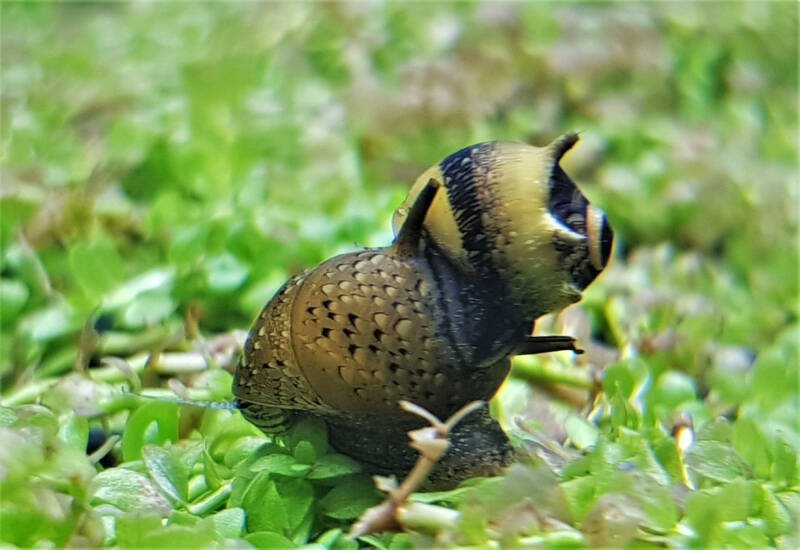
These snails can vary in color, but all have distinctive horns growing out of their shells.
There may be as little as two or as many as six horns growing out of a smooth shell.
Behavior and Natural Habitat
Originally, nerite snails were from Africa. However, they are now commercially available and bred throughout the world.
They come in many color variations and varieties not found in the wild.
However, their main characteristics— namely, their dedication to eating algae and peaceful temperament— remains the same.
As is the case with many snail varieties, nerite snails are very peaceful.
They don’t generally bother other tank inhabitants and are also not disturbed by fellow tank mates.
Though some fish may poke at their shells in curiosity, nerite snails seem to be very tranquil and remain unruffled.
Nerite snails are fairly active and can be seen moving throughout the aquarium as the day progresses.
They are in a near-constant search for food and algae.
If a snail is on its side or back and lethargic or motionless, it’s likely either dead or dying.
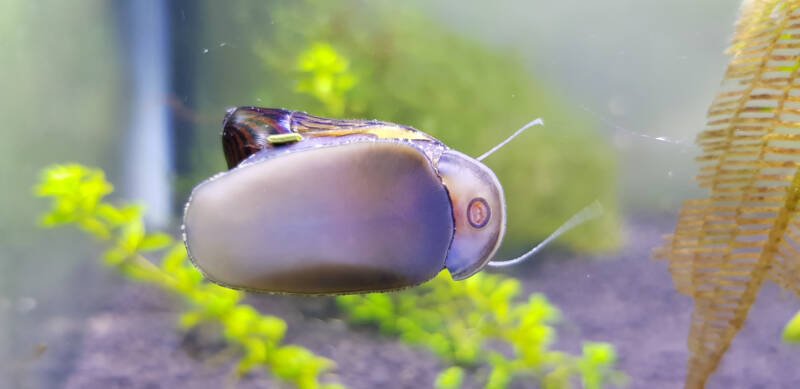
Tank Setup
Nerite snails must be housed in an aquarium that is at least 10 gallons.
However, 20 gallons is more recommended since it can be harder to maintain stable water parameters with just 10 gallons.
It’s also harder to accumulate algae, and other natural food nerite snails require in smaller tanks. So for this carpet cleaner, bigger tanks are always better.
If you’re considering getting a nerite snail (or already have one, or are just curious), make sure the snails won’t create a bioload your tank can’t handle.
Because of their size, it’s tempting to throw more into your tank to keep it clean.
However, this can cause overstocking issues. Snails may be small, but they still produce waste.
Introducing Snails in Aquarium
When introducing nerite snails into a tank, gently place them on the aquarium floor or a stable surface.
Some owners simply drop the snails into the tank and let them float to the bottom. Though, this is dangerous since the snails may land on their sides or back.
Nerite snails have a challenging time turning over.
If they’re not able to right themselves, they could potentially starve. This also puts nerite snails in a vulnerable position, and curious or aggressive tank mates may hurt them.
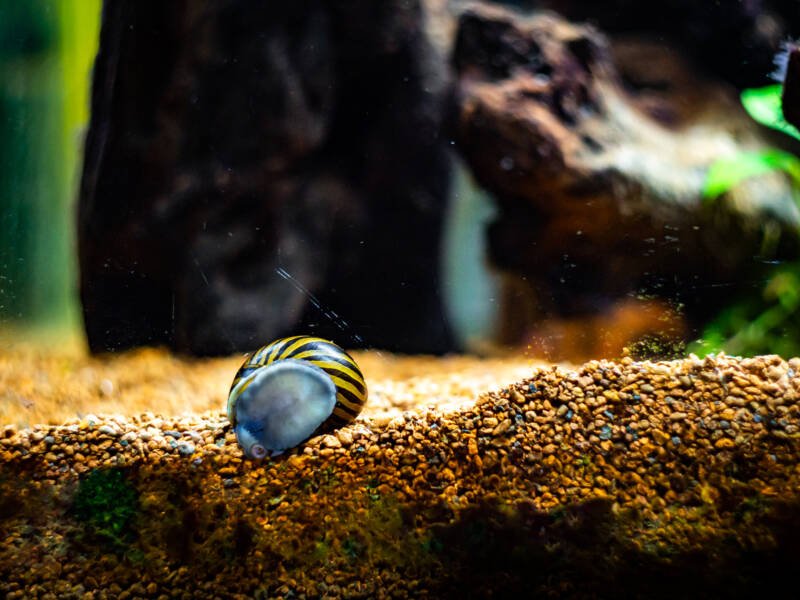
Equipment
This specie of snails is pretty easy to care for, and the type of equipment they require reflects this.
But though nerite snails may not necessarily need an extensive setup, many of the equipment purchases will reflect whether or not the tank has live or silk fake aquarium plants.
If you don’t keep live aquarium plants, any type of lighting will work, and CO2 is not necessary.
- Filtration: Those snails are very adept at sticking fast to various surfaces. Because of this, they can handle a low to moderate water current from filters, meaning that HOB, canister, internal and other filters are all acceptable.
- Heating: Nerite snails require warm water temperatures. As such, a heater and thermometer are necessary to make sure the tank is reaching its tropical potential.
- Water Flow: Low to moderate water movement may be achieved through the use of the filter. As such, wave makers are most likely unnecessary. However, they can be employed if a filter creates next to no current.
- Lid: If the water level is near the top of your tank or you simply end up with a more adventurous nerite snail, one of the snails may try to break out of the aquarium. Make sure you have a secure lid.
For Planted Aquarium
If you prefer live plants, the lighting is necessary, and CO2 setup may be required.
- Lighting: Live plants are highly recommended in tanks with these snails. So for planted aquariums, any lighting must be plant-grade and at least 4500K. Both LED and fluorescent lights will work.
- CO2: Depending on the type of live plants, CO2 may either be required or unnecessary. For high tech tanks that need it, CO2 setups are available for a range of budgets.
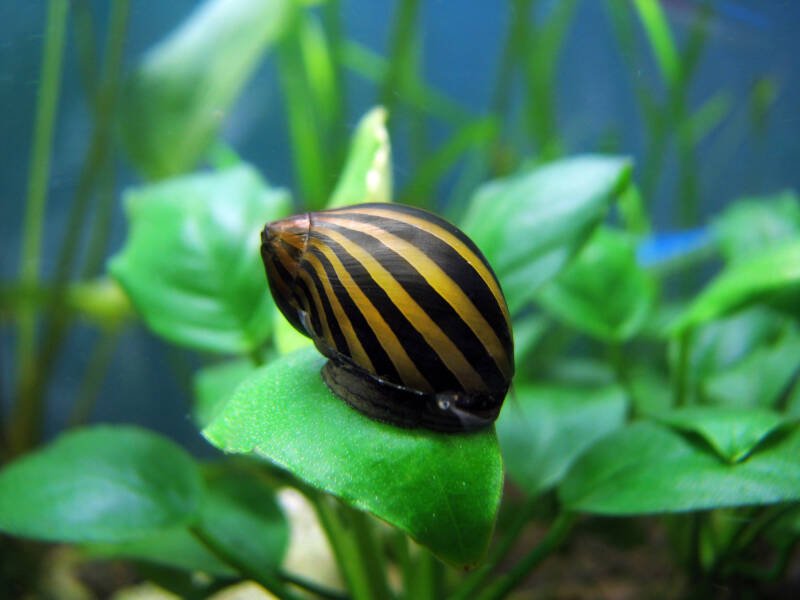
However, live plants create a much higher quality of life for nerite snails. This is explained in more detail below.
- Plants: Live plants almost continuously produce various plant matter. Nerite snails love this, and it makes up a large chunk of their diet. Thus, plants clean the water and also feed the inhabitants.
- Driftwood: Driftwood isn’t necessary for nerite snails to be happy. However, algae do accumulate on driftwood quite readily, creating another food source.
- Substrate: If live plants are used, a planted substrate will be necessary. Thankfully, nerite snails will be sifting through this substrate. It will be as clean as possible, without you having to sir it up and clean up the waste.
Overall, the natural habitat of the nerite snail is easy to replicate.
It’s also easy to meet the specific care needs and requirements for this snail. That’s why nerites are doubtlessly popular in the aquarium trade.
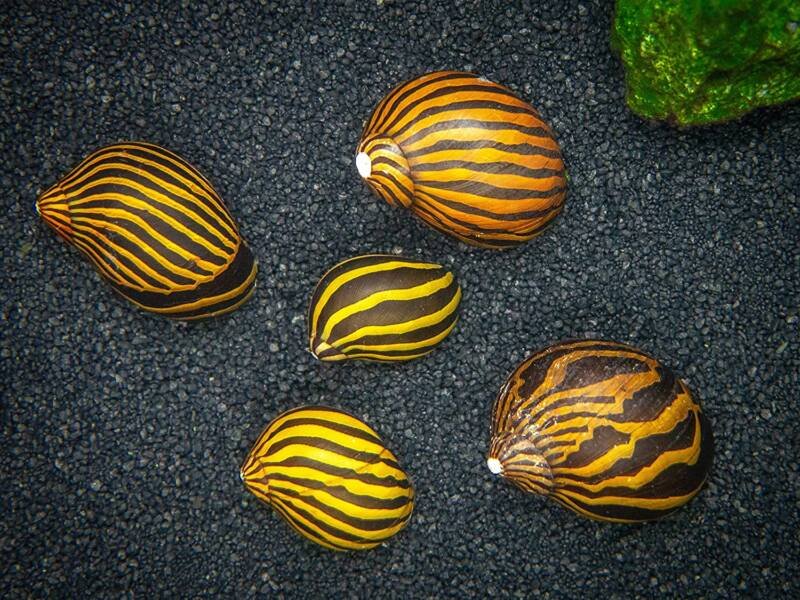
Water Parameters
Nerite snails are more sensitive to water parameters than many fish.
Because of this, they have narrower ranges of acceptable temperatures and pH ranges.
- Temperature: Nerite snails enjoy warmer water that is 72 – 78°F. There is some discussion in the community about whether snails can handle a broader range. The consensus is that they can, but not by much.
- pH Range: A pH range of 6.5 – 8.5 is readily accepted, though there is debate about how accurate this is within the community. Some deviation of roughly 2 – 3 pH is acceptable, but beyond that may cause adverse health effects.
- Hardness: Interestingly, nerite snails prefer a water hardness from 12 to 18, which is higher than many other tank inhabitants. However, even this more unusual preference is easily met and maintained.
Ammonia, nitrites, and nitrates should be kept as close to 0 ppm as possible.
Though many other aquarium inhabitants can take a missed water change or levels up to 5 ppm, this will harm nerite snails.
Water changes and testing should be done weekly.
In addition to this, nerite snails are also susceptible to aquatic medications.
Specifically, copper can be fatal to snails and should be avoided when possible.
If you CAN’T AVOID using copper DO need to use it, keep the dosage to a minimum and change the water promptly.
Tank Mates
Because of their docile temperament, nerite snails get along with many other freshwater tank inhabitants, including fish and invertebrates.
Aggressive fish like cichlids, crayfish, and freshwater sharks, should not be housed with these snails.
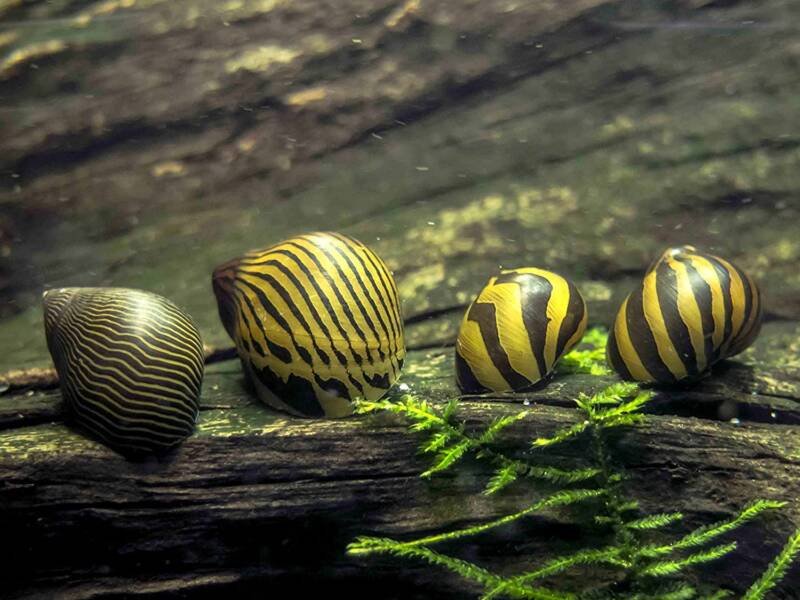
However, the tank mates listed below are all certified compatible:
- Other snails, such as trumpet snails and mystery snails
- Shrimp, such as cherry shrimp and bamboo shrimp
- Bottom dwellers like cory catfish and otocinclus catfish
- Fish such as gouramis and even bettas
- Schooling fish such as tetras, mollies, and guppies
As long as the fish is peaceful and enjoys tropical temperatures, they can likely be housed with nerite snails.
Food and Diet
As you may expect, nerite snails primarily eat algae.
Whether it’s green, brown, soft film algae— you name almost any type of algae, and the nerite snail will eat it.
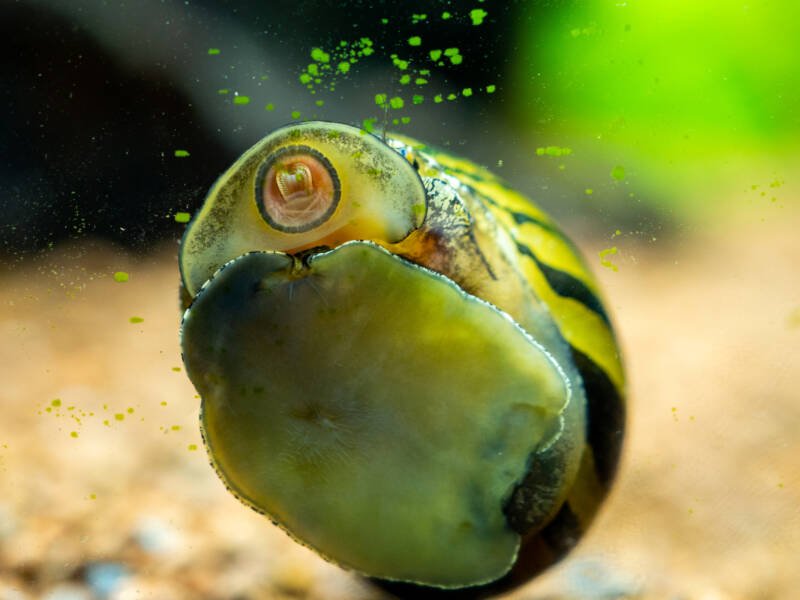
If you’re worried your snails aren’t getting enough to eat, you can give them some algae wafers and blanched vegetables.
Vegetables they enjoy include kale, zucchini, and even carrots.
Snails will search for food just about anywhere. They will scour the glass, substrate, sponge filter, and even power filters.
When they are hungry, you’ll see them working diligently across the tank. However, when it’s not the case, they’ll often sit perfectly still.
And though nerite snails may eat the algae off plants, they won’t eat the plants themselves. This makes nerite snails even more valuable, as they will clean live plants without damaging them.
Calcium supplements may also be necessary for nerite snails to keep a healthy and robust shell. Soft shells can lead to other health issues later on.
Breeding
Fortunately for aquarists, nerite snails only reproduce in brackish water. This is a trait favored by many keepers since it allows them to have complete control over the number of inhabitants in their tank and the number of snails employed to the clean-up crew.
If provided brackish water and mating opportunities, nerite snails will begin to lay eggs on hard surfaces within the tank.
These eggs will look like small white dots, are very hard, and gently stick to whatever they land on.
What To Do With The Eggs
The eggs can either be allowed to hatch or scraped out of the tank and thrown away.
Depending on how many eggs aquarists keep and how often the nerite snails are allowed to mate, a tank can become quickly overrun by nerite snails.
And again, it’s essential to watch the bioload of your tank and adjust as needed.
Why Nerite Snails Are So Popular
Nerite snails may be small, but they’re also undeniably mighty.
They quickly clean up algae and are an effective member of any aquarium clean-up crew, even more so than some shrimp and fish.
They come in a wide range of colors and even sizes so that every aquarist can find their perfect match.
Nerite snails may not be the most visually striking tank inhabitant, but their steady determination and hard work is certainly something to admire.